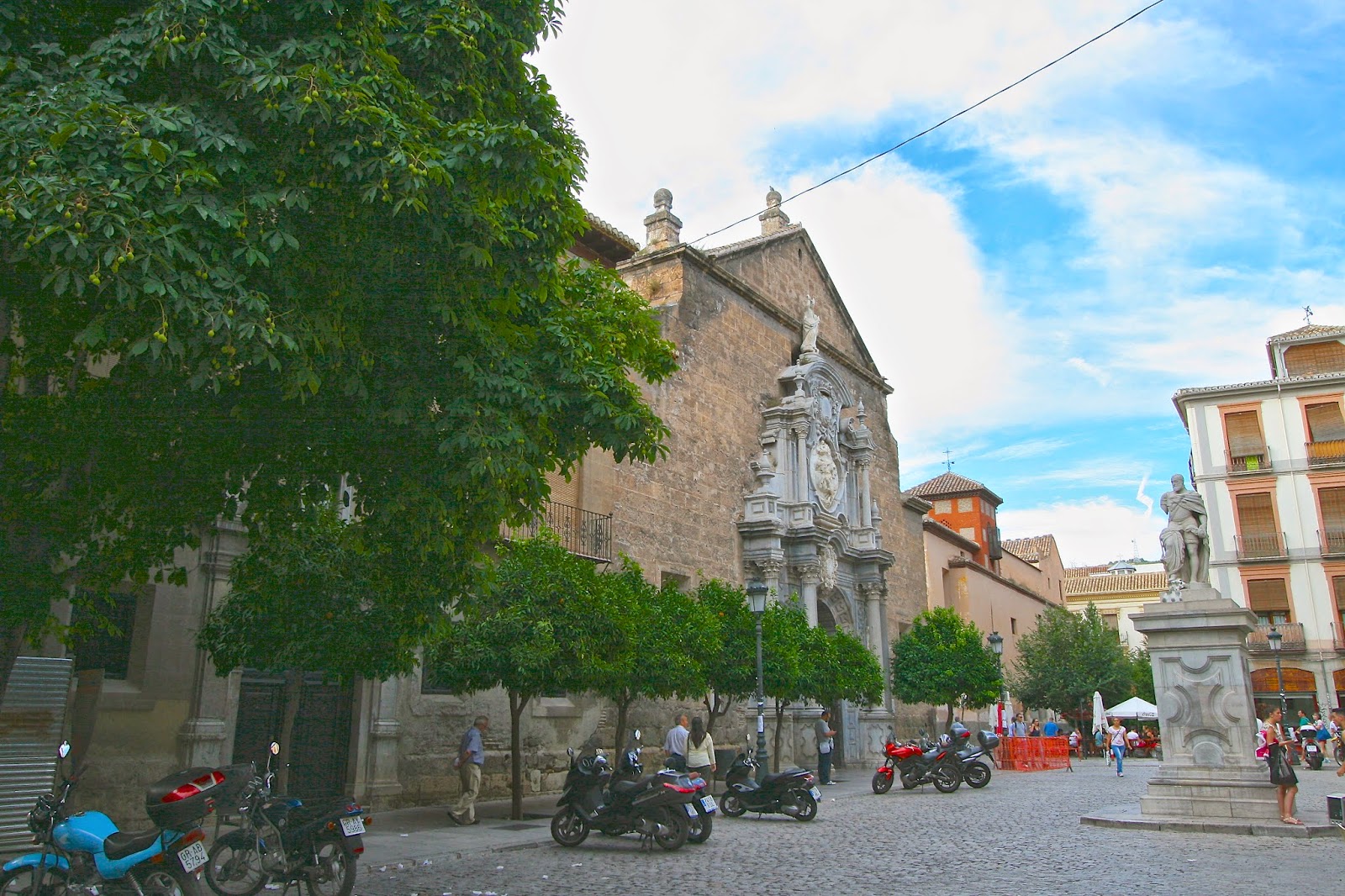Day
7
Started
the day at 9:00 for a 2 hour-long drive to the city of Granada. This time we drove
in the opposite direction from where we had been previously and we saw miles
and miles of orchards with the beautiful, steep Sierra Nevada Mountains as a
backdrop.
Albaicin views
We
continued up the hill (a long, steep hill) to the Sacromonte, an area where there are
cave-houses built into the rocks. This area was inhabited mainly by gypsies and
artists back in the day. It may also be where Flamenco style of dance
originated.
Cave houses in Sacromonte
View back toward Alhambra from Sacromonte
We
then walked back down the hill to the Albaicin and ate an EARLY lunch (at
12:30). Pat and Jeff had paella, a rice
dish that is typical of Spain. Both
voted it as worst meal of the trip. We
shared our meal with a friendly gato (cat) who joined us for lunch.
Albaicin restaurant
Then
we had to walk back UP the hill (another long, steep hill) to the Alhambra.
The Alhambra was the last Moorish stronghold in
Spain. It was built and occupied by the Moors from the 1200 – 1400 until King
Ferdinand and Queen Isabella moved in during the Reconquista. Magnificent in
size and beauty, words and pictures will be unable to describe it. 23 different Muslim rulers (Sultans)occupied
the Alhambra during the Nazrid period and their goal was to create a heaven on
earth. They represented their god primarily through nature, so their use of
geometric symmetry in their intricate designs, extensive use of water features and
incorporation of nature into the courtyards and surrounding gardens was the
overwhelming theme ( the Koran repeatedly states the idea that heaven is a
garden with running water). Their religion had only one god, but there was no relationship
with the creation, with man. No mediator. No Jesus. No bridge for man to access
the Creator God.
Outer wall on the way up to Alhambra
The Alhambra is made up of several areas.
The Alcazaba was the original fortress
constructed by the Moors as their stronghold.
View of the city from Alcazaba
The
Palacios Nazaries was built as the dwelling place of the rulers, and was added
to over centuries. It was extraordinary
in it’s intricate designs, carvings, and mosaic tile work. It was later added to by Ferdinand and
Isabella after Spain kicked out the Moors.
 |
| Courtyard in the Palacio |
 |
| Just one example of the intricate design within the Palacio |



























No comments:
Post a Comment